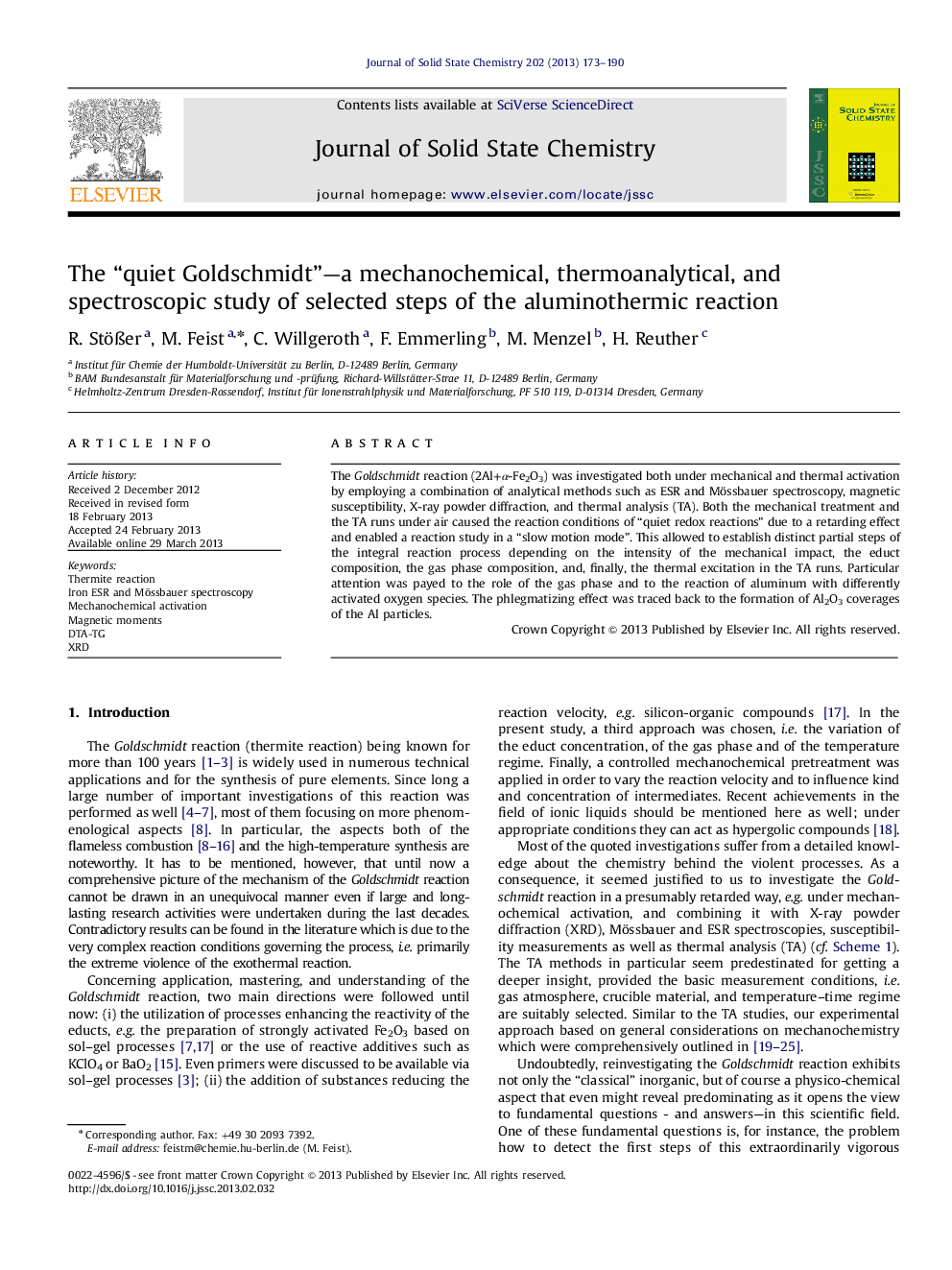| Article ID | Journal | Published Year | Pages | File Type |
|---|---|---|---|---|
| 1332262 | Journal of Solid State Chemistry | 2013 | 18 Pages |
•The usually extremely violent Goldschmidt reaction was studied in a “slow motion mode”.•Both the mechanochemical and the thermal treatment caused a phlegmatizing effect on the reaction.•Early reaction stages were sensitively indicated by ESR and magnetic measurements.•Intermediates and final products were characterized by XRD and Mössbauer data.•Differently activated oxygen species react with aluminum to form an oxide coverage retarding the vigorous reaction.
The Goldschmidt reaction (2Al+α-Fe2O3) was investigated both under mechanical and thermal activation by employing a combination of analytical methods such as ESR and Mössbauer spectroscopy, magnetic susceptibility, X-ray powder diffraction, and thermal analysis (TA). Both the mechanical treatment and the TA runs under air caused the reaction conditions of “quiet redox reactions” due to a retarding effect and enabled a reaction study in a “slow motion mode”. This allowed to establish distinct partial steps of the integral reaction process depending on the intensity of the mechanical impact, the educt composition, the gas phase composition, and, finally, the thermal excitation in the TA runs. Particular attention was payed to the role of the gas phase and to the reaction of aluminum with differently activated oxygen species. The phlegmatizing effect was traced back to the formation of Al2O3 coverages of the Al particles.
Graphical abstractFigure optionsDownload full-size imageDownload as PowerPoint slide
